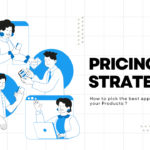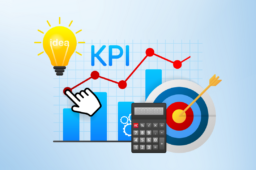
Risk vs. Reward: Why Project Portfolio Management is a Must
- September 20, 2024
- by
- tehreem
Managing multiple projects simultaneously can feel like juggling too many balls at once. Every project comes with its own risks, rewards, and challenges. Trying to balance them all can leave even the most experienced managers overwhelmed.
The stakes are high. If one project slips, the others may follow. Budget overruns, missed deadlines, and misaligned goals can result in significant financial losses and damaged reputations. The pressure to ensure that each project aligns with the company’s overall business goals is immense, and getting it wrong can set an organization back for years.
This is where Project Portfolio Management (PPM) becomes a game-changer. By effectively managing a portfolio of projects, organizations can balance risk vs. reward to ensure that the right projects are pursued at the right time. PPM not only optimizes resource allocation but also ensures that every project contributes to overarching business objectives. Let’s dive into why Portfolio Management is essential in today’s fast-paced business world.
Understanding Risk in Project Portfolio Management
At its core, risk in project portfolio management refers to the potential for adverse outcomes—whether it be budget overruns, missed deadlines, or unforeseen market changes. Every project comes with inherent risks, but when managed as part of a larger portfolio, these risks can be anticipated and mitigated more effectively.
In PPM, risk assessment is not just about identifying threats but also understanding how each risk affects the overall portfolio. By managing risks across projects, businesses can minimize negative impacts and maximize positive outcomes, ensuring that projects remain aligned with their strategic goals.
Reward: The Benefits of Project Portfolio Management
While there’s always risk in managing multiple projects, the rewards can be substantial when PPM is executed correctly. For businesses, rewards can take many forms: increased return on investment (ROI), improved project alignment with long-term business strategies, and optimized use of resources.
For example, a well-managed portfolio allows organizations to prioritize projects that deliver the highest value while shelving or re-evaluating those that don’t. The ability to streamline resources, minimize waste, and ensure that all projects contribute to the company’s bottom line is one of the key reasons why Portfolio Management is so critical today.
Why Risk Management is Essential for Project Success?
Balancing risk vs. reward is the crux of effective portfolio management. When risks are identified early and managed properly, project failure rates can be significantly reduced. Without proper risk management, even the most promising projects can falter.
Effective risk management in PPM means proactively identifying potential issues and mitigating them before they snowball into bigger problems. Techniques like risk prioritization, resource balancing, and scenario planning can help managers make informed decisions that ensure long-term project success.
Key Components of a Successful PPM Strategy
A successful PPM strategy revolves around a few core components:
- Alignment with Business Goals: Projects must support the company’s strategic objectives.
- Risk vs. Reward Balancing: Every project should undergo a detailed risk/reward analysis before getting the green light.
- Use of Portfolio Management Tools: Software solutions and analytical tools allow businesses to monitor, track, and optimize their project portfolios. Tools like Smartsheet and Microsoft Project enable managers to keep tabs on project performance in real-time, ensuring that risks are quickly identified and addressed.
These components not only help streamline operations but also make it easier for businesses to maintain a competitive edge in the market.
How to Measure Risk vs. Reward in Project Portfolios
To measure risk vs. reward in PPM, managers rely on specific tools and metrics. Some common methods include:
- Risk/reward ratios: A quantitative analysis of potential project risks vs. the expected rewards.
- Key performance indicators (KPIs): Metrics such as budget adherence, schedule performance, and resource usage.
- Scenario planning: A method that helps anticipate various outcomes based on different risk factors and project decisions.
By using these tools, managers can gain better insight into which projects will provide the most value for the least risk.
Common Challenges in Balancing Risk vs. Reward in PPM
Balancing risk and reward isn’t always straightforward. Some of the most common challenges include:
- Resource limitations: Many companies don’t have enough resources to complete every project in their portfolio, making prioritization critical.
- Misaligned goals: If projects don’t align with a company’s strategic objectives, the rewards may be minimal—even if the projects are successful.
- Market volatility: External factors like economic downturns or changes in consumer behavior can make it difficult to predict rewards accurately.
To overcome these challenges, businesses need to adopt flexible PPM strategies that allow for adjustments based on real-time data and evolving circumstances.
The Role of Technology in PPM: Mitigating Risks, Maximizing Rewards
Technology plays a vital role in modern Portfolio Management. Tools powered by artificial intelligence (AI) and predictive analytics can help businesses anticipate risks and rewards more accurately than ever before.
AI can forecast potential outcomes, analyze risk factors, and provide recommendations for optimal project prioritization. By automating repetitive tasks and improving decision-making capabilities, PPM software platforms make managing risks and maximizing rewards more efficient.
Industry-Specific Case Studies: Risk vs. Reward in Different Sectors
Different industries face unique challenges when it comes to PPM. For instance:
- IT sector: Projects often deal with rapidly evolving technology, making risk management crucial. However, the rewards from successful innovation can be immense.
- Construction sector: Large projects with tight budgets and timelines must balance numerous risks, such as weather delays or material shortages.
- Healthcare sector: Compliance and regulatory concerns are significant risks, but the potential rewards from successful projects—such as improving patient care—are substantial.
Understanding how Portfolio Management works across industries provides valuable insights into how companies can tailor their PPM strategies to suit their unique needs.
The Future of Project Portfolio Management
The future of Project Portfolio Management is driven by data. With continued advancements in AI, machine learning, and predictive analytics, businesses can expect even more accurate risk and reward assessments. To stay competitive, organizations must continue refining their PPM strategies and leveraging technology to balance risk and reward.
FAQs Section
- What is Project Portfolio Management and why is it important?
PPM is the practice of managing multiple projects in a way that ensures they align with a business’s overall objectives. It’s important because it helps organizations balance risk and reward while optimizing resources. - How do companies balance risk and reward in project portfolios?
Companies use risk/reward analyses, scenario planning, and predictive analytics to evaluate which projects will deliver the most value with the least risk. - What are the best tools for managing risks in PPM?
Popular tools include Smartsheet, Microsoft Project, and predictive analytics software. - How can PPM improve ROI?
By aligning projects with strategic objectives and efficiently managing resources, PPM can increase return on investment by ensuring that the right projects are prioritized. - What are the key factors to consider when evaluating project risks?
Key factors include market volatility, resource limitations, and alignment with business goals.






